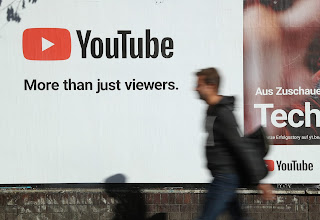The true story of the very first YouTube video
It is called "Me at the zoo" and has led to the success of one of the most famous websites in the world.
By Editorial Staff
COURTESY YOUTUBE / JAWED KARIM
April 23 is a date to remember. Yes, because exactly fourteen years ago Jawed Karim published the first video in history on YouTube, kicking off the global success of the made in USA platform. This is an 18-second clip of Karim visiting the San Diego Zoo - hence the title of the video "Me at the zoo". The image quality isn't that great and the same can be said of the content, but it can fit if we consider that YouTube was still in beta at the time.
Two months before uploading the video online, Karim agreed with the platform's two other founders, Steve Chen and Chad Hurley, that he would be banned from running the site and would only act as a consultant on purely technical matters. We are in February 2005 and the three founders know perfectly well that they have something big in their hands, or perhaps it is not so clear to Karim. Less than 545 days later, Google buys the platform for more than $ 1.5 million.
This content is imported from YouTube. You may be able to find the same content in another format, or you may be able to find more information, at their web site.
"Me at the zoo" has about 66 million views and 2 million comments and is the only video left on Karim's channel, as if to clarify the importance of his role in the foundation of YouTube. Chen and Hurley, in fact, have always spread a "simplified" version of the company's birth, which has largely excluded Jawed. The two say they first thought of YouTube in the winter of 2005, after a dinner at Chen's apartment in San Francisco.
According to Karim, that dinner never existed, while Chen and Hurley simply argue that Jawed was not present in that circumstance. In short, we will never be able to know how things really went, which is why we will be content to trace the story of Karim and his companions only in outline. We know that before the birth of YouTube, the three tried to work on different projects: from the HotOrNot.com site to the video sharing portal for online auctions, but without obtaining the desired results. Then came the turning point: the creation of YouTube and the purchase of the platform by Google.
April 23 is a date to remember. Yes, because exactly fourteen years ago Jawed Karim published the first video in history on YouTube, kicking off the global success of the made in USA platform. This is an 18-second clip of Karim visiting the San Diego Zoo - hence the title of the video "Me at the zoo". The image quality isn't that great and the same can be said of the content, but it can fit if we consider that YouTube was still in beta at the time.
Two months before uploading the video online, Karim agreed with the platform's two other founders, Steve Chen and Chad Hurley, that he would be banned from running the site and would only act as a consultant on purely technical matters. We are in February 2005 and the three founders know perfectly well that they have something big in their hands, or perhaps it is not so clear to Karim. Less than 545 days later, Google buys the platform for more than $ 1.5 million.
This content is imported from YouTube. You may be able to find the same content in another format, or you may be able to find more information, at their web site.
"Me at the zoo" has about 66 million views and 2 million comments and is the only video left on Karim's channel, as if to clarify the importance of his role in the foundation of YouTube. Chen and Hurley, in fact, have always spread a "simplified" version of the company's birth, which has largely excluded Jawed. The two say they first thought of YouTube in the winter of 2005, after a dinner at Chen's apartment in San Francisco.
According to Karim, that dinner never existed, while Chen and Hurley simply argue that Jawed was not present in that circumstance. In short, we will never be able to know how things really went, which is why we will be content to trace the story of Karim and his companions only in outline. We know that before the birth of YouTube, the three tried to work on different projects: from the HotOrNot.com site to the video sharing portal for online auctions, but without obtaining the desired results. Then came the turning point: the creation of YouTube and the purchase of the platform by Google.
But what were Karim, Chen and Hurley doing before the site was founded? Karim was one of PayPal's first employees, or rather, he was one of the key programmers of its success, at just 23 years old. However, he soon decided to leave the company to continue his studies at Stanford University, where he met colleagues Chad Hurley and Steve Chen, with whom he often found himself discussing common ideas and projects at Max's Open Café, near the headquarters of the university. The rest is history.
This content is created and maintained by a third party, and imported onto this page to help users provide their email addresses. You may be able to find more information about this and similar content at piano.io
This content is created and maintained by a third party, and imported onto this page to help users provide their email addresses. You may be able to find more information about this and similar content at piano.io
The first YouTube video was uploaded on April 23, 2005. Today it is a colossus with a turnover of 19.8 billion
The first video is still online. Just type "Me At The Zoo". Jawed Karim, then 27, the first YouTube user and founder, will appear on the screen . It was April 23, 2005. Today the platform is part of the Google family and in 2020 it helped bring 19.8 billion dollars into the pockets of the Mountain View giant.
The mystery of the origins
Sixteen years have passed since then and the company has undergone important transformations, although its birth still remains shrouded in mystery. The founders were Jawed Karim and two of his former Paypal colleagues, Chad Hurley and Steve Chen . It seems that the idea was born during a party in January 2005: there was no place to share photos and videos of the event. Jawed himself says, however, that two known events triggered the idea: Justin Timberlake tearing Janet Jackson 's bra and the tsunami of December 26, 2004.
In any case, it matters little what the real genesis of the project is. What really makes you think is that Google realized the potential of the platform almost immediately. At the end of 2006, Big G bought Youtube for 1.65 billion dollars : one of the most important purchases of the giant along with Motorola, Nest and DoubleClick.
The company today
The three founders and their 70 employees, however, were left with some independence after the acquisition. This is also probably why the platform was able to achieve important results.
Just two years ago, Google wanted to release the platform's official balance sheet data. The creature of Karim, Hurley and Chen had a turnover of 15.15 billion in 2019, equivalent to 10% of the total proceeds of Google .
In 2020 YouTube grew again and reached 19.8 billion , despite competition from Zuckerberg's social networks. Instagram brought in more than 20 billion in the same year - more than a quarter of Facebook Inc.'s turnover.
The numbers of Youtube
Even in terms of numbers, things have changed a lot compared to 2005. The latest data dates back to 2020, when Youtube recorded 2 billion monthly users . The platform also reports that 500 hours of video are uploaded every minute. The average visit lasts 23 minutes and touches 9.69 pages.
YouTube is thus positioned as the second most visited social platform after Facebook and immediately before Instagram, which scores 14% more users. This statistic is not valid for Italy, where the video platform beats Zuckerberg's creature: 36.2 million users against 35.9. Of these, worldwide, 33% are under the age of 13.
In addition, the same company informs about its domain that local versions of the platform have been launched in more than 100 countries and that consequently it is possible to surf it with the possibility of 80 different languages .
The importance for the business
So considering YouTube's reach, it's no surprise that the platform is a favorite of marketers . The major companies - even those in the financial sector, which usually want to project a more plastered public image - take care of their YouTube channel to be able to convey messages in a faster and more captivating way. Think of the giants of finance, such as Jp Morgan or BlackRock.
According to a 2019 Go Globe research, 78.8% of marketers consider Youtube effective for video marketing, compared to 58.8% in favor of using Facebook. More than half of marketers are running video ads on Youtube. And while YouTube already accounts for more than a quarter (27.1%) of marketing teams' spending on digital video ads, 62% of businesses plan to increase their budget over the next 12 months.
And it is in fact the same company to communicate that "in the last five years, we have paid more than 2 billion dollars to those who have decided to monetize their content claimed with the content id, which is used by more than 9 thousand partners, including many of the main networks, film studios and record companies ". All signs that herald an exponential growth of the platform, which according to analysts, could reach 6 billion in net advertising revenues in 2022.
The mystery of the origins
Sixteen years have passed since then and the company has undergone important transformations, although its birth still remains shrouded in mystery. The founders were Jawed Karim and two of his former Paypal colleagues, Chad Hurley and Steve Chen . It seems that the idea was born during a party in January 2005: there was no place to share photos and videos of the event. Jawed himself says, however, that two known events triggered the idea: Justin Timberlake tearing Janet Jackson 's bra and the tsunami of December 26, 2004.
In any case, it matters little what the real genesis of the project is. What really makes you think is that Google realized the potential of the platform almost immediately. At the end of 2006, Big G bought Youtube for 1.65 billion dollars : one of the most important purchases of the giant along with Motorola, Nest and DoubleClick.
The company today
The three founders and their 70 employees, however, were left with some independence after the acquisition. This is also probably why the platform was able to achieve important results.
Just two years ago, Google wanted to release the platform's official balance sheet data. The creature of Karim, Hurley and Chen had a turnover of 15.15 billion in 2019, equivalent to 10% of the total proceeds of Google .
In 2020 YouTube grew again and reached 19.8 billion , despite competition from Zuckerberg's social networks. Instagram brought in more than 20 billion in the same year - more than a quarter of Facebook Inc.'s turnover.
The numbers of Youtube
Even in terms of numbers, things have changed a lot compared to 2005. The latest data dates back to 2020, when Youtube recorded 2 billion monthly users . The platform also reports that 500 hours of video are uploaded every minute. The average visit lasts 23 minutes and touches 9.69 pages.
YouTube is thus positioned as the second most visited social platform after Facebook and immediately before Instagram, which scores 14% more users. This statistic is not valid for Italy, where the video platform beats Zuckerberg's creature: 36.2 million users against 35.9. Of these, worldwide, 33% are under the age of 13.
In addition, the same company informs about its domain that local versions of the platform have been launched in more than 100 countries and that consequently it is possible to surf it with the possibility of 80 different languages .
The importance for the business
So considering YouTube's reach, it's no surprise that the platform is a favorite of marketers . The major companies - even those in the financial sector, which usually want to project a more plastered public image - take care of their YouTube channel to be able to convey messages in a faster and more captivating way. Think of the giants of finance, such as Jp Morgan or BlackRock.
According to a 2019 Go Globe research, 78.8% of marketers consider Youtube effective for video marketing, compared to 58.8% in favor of using Facebook. More than half of marketers are running video ads on Youtube. And while YouTube already accounts for more than a quarter (27.1%) of marketing teams' spending on digital video ads, 62% of businesses plan to increase their budget over the next 12 months.
And it is in fact the same company to communicate that "in the last five years, we have paid more than 2 billion dollars to those who have decided to monetize their content claimed with the content id, which is used by more than 9 thousand partners, including many of the main networks, film studios and record companies ". All signs that herald an exponential growth of the platform, which according to analysts, could reach 6 billion in net advertising revenues in 2022.




Post a Comment